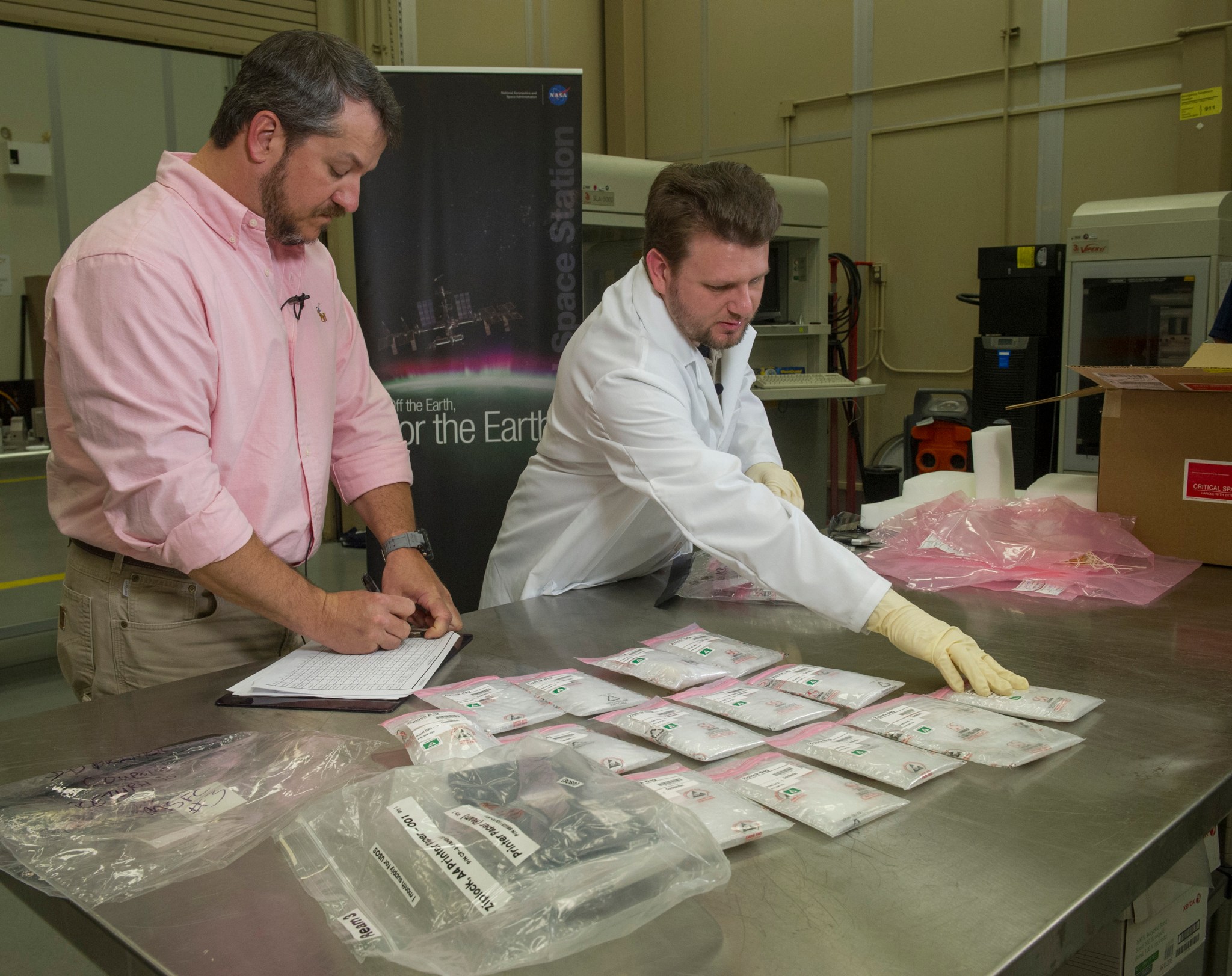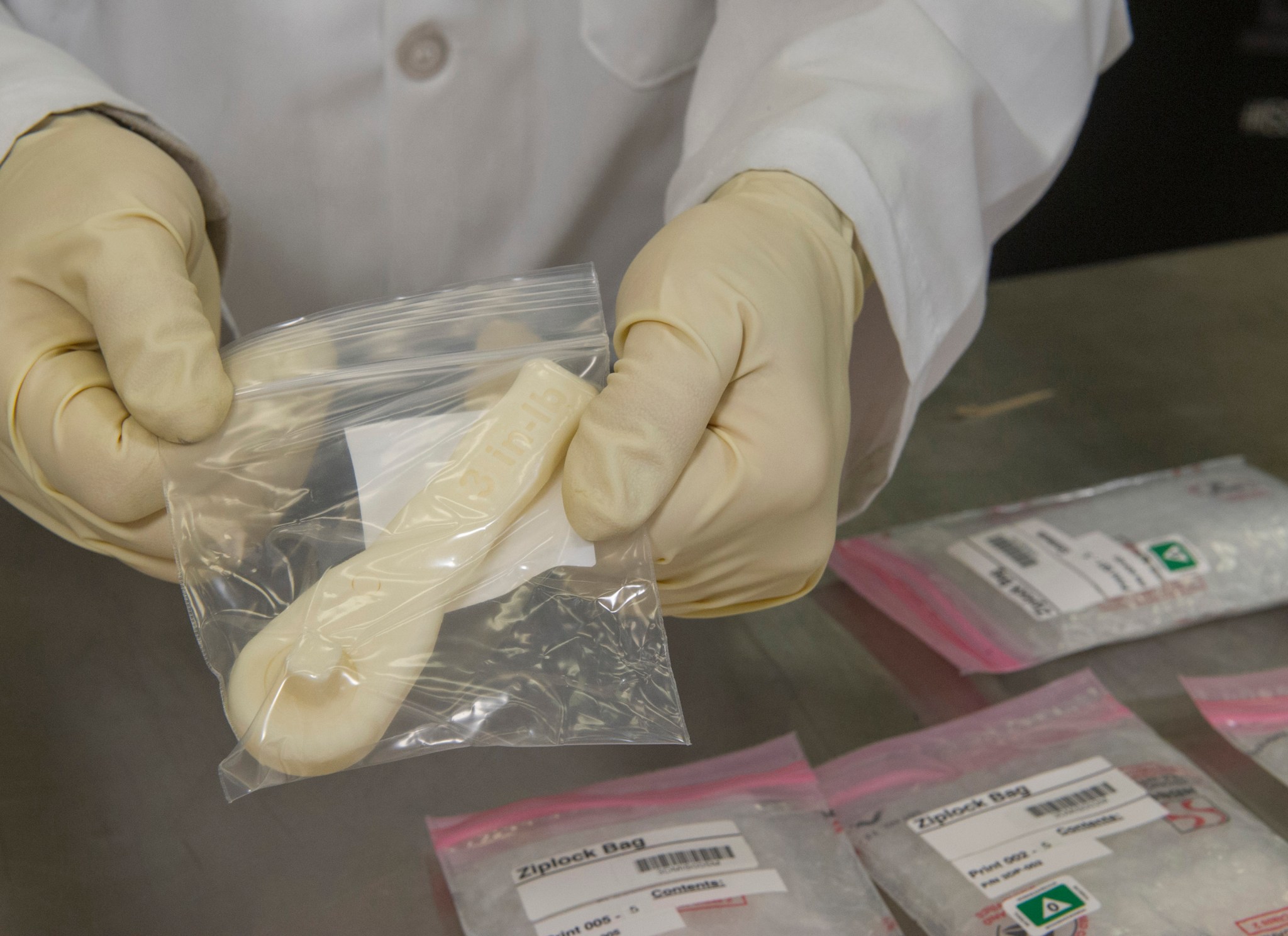Engineers at NASA’s Marshall Space Flight Center in Huntsville, Alabama, unboxed some special cargo from the International Space Station on April 6: the first items manufactured in space with a 3-D printer.

The items were manufactured as part of the 3-D Printing in Zero-G Technology Demonstration on the space station to show that additive manufacturing can make a variety of parts and tools in space. These early in-space 3-D printing demonstrations are the first steps toward realizing an additive manufacturing, print-on-demand “machine shop” for long-duration missions and sustaining human exploration of other planets, where there is extremely limited ability and availability of Earth-based resupply and logistics support. In-space manufacturing technologies like 3-D printing will help NASA explore Mars, asteroids, and other locations.
The technology demonstration got underway when NASA astronaut Barry “Butch” Wilmore installed the printer in the station’s Microgravity Science Glovebox in November 2014. Before the end of the year, the crew manufactured 21 items including a wrench, the first tool built in space. To make the items, the printer heated a relatively low-temperature plastic filament to build parts, layer on top of layer, in designs supplied to the machine. The printer remains on aboard the station for continued use later this year. The station provides a one-of-a-kind laboratory for demonstrating additive manufacturing in the microgravity environment where NASA wants to use the technology.
The printer used 14 different designs and built a total of 21 items and some calibration coupons. The parts returned to Earth in February on the SpaceX Dragon. They were then delivered to Marshall where the testing to compare the ground controls to the flight parts will be conducted. Before the printer was launched to the space station, it made an identical set of parts. Now, materials engineers will put both the space samples and ground control samples literally under a microscope and through a series of tests. Project engineers will perform durability, strength and structural tests on both sets of printed items and even put them under an electron microscope to scan for differences in the objects.
To build and operate the printer, NASA worked with Made In Space Inc., a northern California company that is building an Additive Manufacturing Facility – the next-generation printer that will be operated on the station. This printer will be available to both commercial and government users, including NASA, through the Center for the Advancement of Science In Space, or CASIS.
For more information on the ISS:
To track the progress of 3-D printing in space, follow the program in social media:
Media Contact
Tracy McMahan
NASA Marshall Space Flight Center
256-544-0034
tracy.mcmahan@nasa.gov





























